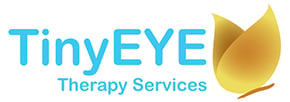
With the increased adoption of technology within schools across North America, it leaves one to wonder how this is impacting our youth. It seems that everywhere we turn there’s no getting away from there is a new technology. Like it or not, the future is here…along with the list of critics opposed to this shift. For those who have already opened their doors to online therapy (also known as telepractice), the ability to serve students with speech and occupational therapy disorders has shone through as paramount. It is our hope that the Speech-Language Pathology and Occupational Therapy community become educated on the vast benefits this new form of delivery provides through the use of traditional telepractice, as well as the next generation of telepractice in introducing robot doubles to the classroom.
Misconception #1: Online therapy is limited to children with certain disorders.
We believe that every child deserves the opportunity to access therapy services regardless of his or her challenges. TinyEYE works with a large range of students and can create unique learning plans to address the needs of the child. Typically cognitive, attention, and physical needs are those that have the most impact on the student’s independent ability to participate. However, a TinyEYE therapist can work in consultation with school staff for students with significant needs in these areas, or an E-Helper can often help the student participate. Depending on the severity of the child’s disability sometimes online is not the best delivery model, but we leave it to the progress of the child to determine the best solution. Keeping in mind many of our students would be faced with the alternative of no therapist, we chose not to box a child’s ability to succeed with their disorder.
"TinyEYE is a company that is willing to work and adapt to the needs of their clients. They have allowed our school to bring consistent speech services into our rural area for students who need severe interventions. The staff is friendly and easy to work with; they are willing to talk you through any glitches that arise. They are able to develop a program that fits a student’s very specific needs. The progress we have seen since working with TinyEYE is incredible." – Karen S., Elementary Teacher
Misconception #2: Online therapy isn’t ethical – it doesn’t work.
A group of passionate professionals who primarily apply technology to reach our communities prove this idea wrong every day. Our licenced therapy providers use evidence-based practices to drive our students’ experience and outcomes. Telepractice has proven to be an effective delivery model approved by the American Speech and Language Association (ASHA), Speech-Language Audiology of Canada (SAC, formerly CASLPA), Canadian Association of Occupational Therapists (CAOT), and the American Association of Occupational Therapists (AOTA). Please take some time and review the widely available research literature on telepractice to understand its efficacy for all areas of service.
"I'm so excited to be part of a company that is seeking to touch the lives of children for the right reasons. While knowing that businesses have to make money, the underlying reasons for what TinyEYE does for children is so much more meaningful. Thank you for all that you do to help us as SLPs to be able to better make a difference!" – Gina, SLP
Misconception #3: You can’t build relationships without being in person.
The large majority of us has experienced first-hand through a Skype call or face time how we indeed can create relationships online. Our dedicated team of therapists connect with the students, parents, and educators at each school we serve. In addition to our online therapy room, we are able achieve mobility in the classroom with the use of robot doubles. Our therapists can appear on a robot to join their students from the classroom to the gym. And yes…we can even have a race with a student who gets around on wheels, just like our robot does.
"Jennifer has worked with us over the last two years and we are extremely pleased with her work. She has made and maintained a connection with our students. This was not easy to do, our students are shy and reluctant to form a relationship with a stranger. Now they are at ease with her and really like working with her. This connection has also made student progress very successful, therefore, I want to continue with our relationship next year.” – J. R. D., Resource Teacher
Misconception #4: Telepractice is a disservice to the speech and occupational therapy profession.
Since 2005, TinyEYE has faced the adversity of those against telepractice. Should we have listened, the hundreds of thousands of students we have served over the last 9 years would have gone without therapy. Communities were underserved due to the shortage of therapists in rural and remote regions; not enough therapists were choosing to relocate or travel to these places and provide consistent services for the hundreds of children waiting for help. We found a quality way to show up for our students. Not only have we influenced the future of these communities, we have provided a rewarding career path for Speech-Language Pathologist and Occupational Therapists.
"TinyEYE has permitted our rural school, where all but 10 students are bussed in, to receive support for their speech and language needs. It has allowed us to access and build on what would otherwise be a non-existent service in our area....not unlike many rural areas.
It has also allowed us to put supports in place for students who would not otherwise get them as our school aged population and their parents did not seek pre-school assessment or support.
Thirdly, it has allowed staff to access training that otherwise does not exist. It is hands on, immediate and relevant. TinyEYE owes a good part of its success to their outlook on the future, thinking outside the box and flexibility in service delivery. We would be lost without them." – Lise B., Special Needs Coordinator
We are extremely proud of our team, the broad range of disorders they treat, and their ability to mend spirits, grow smiles, and engage children in their lives.
Want to find out if online therapy or a robot is the right fit for your school?
This is part of a 12-week blog series on Robots and Online Therapy by TinyEYE Therapy Services.
Previous topics:
- Q&A: Robots in Schools - Your Questions, Answered
- Can a robot REALLY teach my students?
- Innovation Sensation – Teletherapy All Grown Up
- Students LOVE Innovative Speech Therapy Technology in the Classroom
- When Worlds Collide: TinyEYE Therapy Services brings Robots into the Classroom
Is there a specific topic on Teletherapy Robots in the Classroom you would like to hear about? Let us know in the comments!


